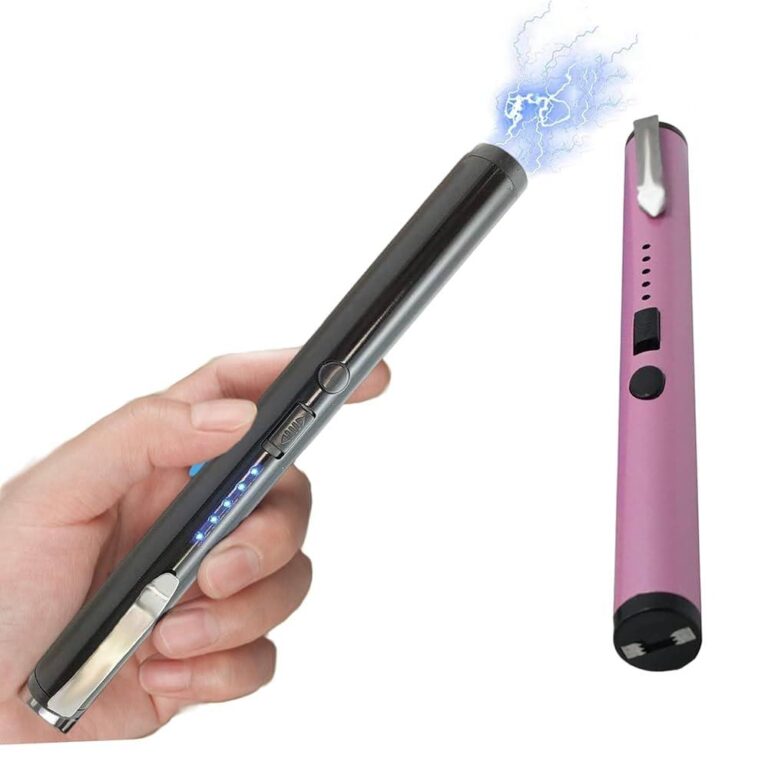Table of Contents
- Understanding the Electromagnetic Interference Risks of Stun Guns on Medical Devices
- How Stun Guns Impact Pacemakers and Other Cardiac Implants
- Recognizing Symptoms of Medical Device Malfunction After Exposure to Stun Guns
- Best Practices for Protecting Vulnerable Individuals from Stun Gun Hazards
- Wrapping Up
Understanding the Electromagnetic Interference Risks of Stun Guns on Medical Devices
Stun guns emit a high-voltage, low-amperage electric shock designed to incapacitate an attacker by disrupting muscle control. However, this electrical discharge does not discriminate-it produces strong electromagnetic fields (EMF) that can interfere with the precise electronic operations of medical devices such as pacemakers, defibrillators, and insulin pumps. These devices rely heavily on sensitive circuitry to regulate vital bodily functions, and exposure to external electromagnetic interference (EMI) can lead to malfunctions or complete shutdowns, putting the user at serious risk. The proximity of a stun gun discharge is especially critical; even momentary contact or close-range exposure can create disturbances potent enough to disrupt normal device functionality.
Understanding the specific risks involves recognizing how EMI affects medical electronics:
- Signal distortion: EMI can corrupt data communication between implanted devices and their controlling mechanisms.
- Device reset or shutdown: Sudden electrical interference may cause the device to perform an unintended reboot or cease operation temporarily.
- Therapeutic malfunction: Misfires or false readings could result in inappropriate therapeutic responses or missed interventions.
How Stun Guns Impact Pacemakers and Other Cardiac Implants
Individuals with pacemakers and other cardiac implants face unique risks when exposed to stun guns. These devices emit a high-voltage electric shock designed to incapacitate temporarily, but the electrical interference they produce can disrupt the normal functioning of implanted cardiac devices. In some cases, the electromagnetic pulse can cause the pacemaker to misinterpret signals, leading to inappropriate pacing or complete shutdown. This interference not only compromises the device’s ability to maintain a steady heartbeat but can also trigger dangerous arrhythmias, posing serious health threats to the user.
Crucial considerations for anyone with cardiac implants include:
- Avoiding proximity to stun guns and similar high-voltage devices whenever possible.
- Understanding that the electric shock from a stun gun can travel through the body, potentially affecting implanted electronics.
- Consulting healthcare professionals about the risks associated with electromagnetic interference in everyday environments.
By acknowledging these dangers, individuals with pacemakers and cardiac implants can take proactive steps to minimize their exposure and maintain device functionality. Awareness and caution are key to preventing unintended cardiac complications triggered by the powerful electric currents from stun guns.
Recognizing Symptoms of Medical Device Malfunction After Exposure to Stun Guns
When someone with an implanted medical device such as a pacemaker, defibrillator, or insulin pump is subjected to the electrical discharge of a stun gun, the device’s functionality can be severely compromised. Signs to watch for include unexplained irregular heartbeats, sudden dizziness, and unexpected device alerts. Other symptoms might manifest as shortness of breath, chest discomfort, or unusual sensations near the implant site. These subtle indicators often go unnoticed unless patients and caregivers are vigilant, potentially leading to delayed medical intervention and increased health risks.
Immediate awareness and action are critical. Individuals experiencing any of the following should seek medical evaluation promptly:
- Unresponsive or erratic behavior of the implanted device
- Persistent chest pain or palpitations
- Sudden confusion, weakness, or lightheadedness
- Unexpected alarms or signals emitted from the medical device
The intersection of electrical weapons and sensitive medical equipment demands heightened caution and preparedness. Regular check-ups and device monitoring post-exposure can prevent complications and ensure safety.
Best Practices for Protecting Vulnerable Individuals from Stun Gun Hazards
When it comes to safeguarding individuals with medical devices such as pacemakers, defibrillators, or insulin pumps, understanding the potential risks posed by stun guns is critical. The electrical currents from stun guns can interfere with the sensitive electronics within these devices, potentially causing malfunctions or triggering hazardous reactions. To mitigate these dangers, it’s essential to ensure that any use or presence of stun guns is closely controlled, especially in environments where vulnerable individuals reside or frequent.
Practical steps that can be taken include:
- Implementing clear policies that prohibit stun gun use around medical facility zones and areas with known vulnerable populations.
- Increasing awareness among caregivers, healthcare professionals, and family members about the risks these devices pose.
- Ensuring proper training for security personnel to recognize vulnerable individuals and avoid stun gun deployment near them.
- Encouraging open communication so people with medical devices can report any unexpected symptoms after potential stun gun exposure immediately.
Wrapping Up
In a world where personal safety devices are increasingly common, understanding the risks stun guns pose to individuals with medical devices is crucial. The powerful electric shock delivered by these devices can interfere with pacemakers, defibrillators, and other implanted technology, potentially leading to serious health complications or even life-threatening situations. Awareness and education are key to preventing unintended harm-whether you’re carrying a stun gun or simply crossing paths with someone who has one. By staying informed and exercising caution, we can better protect the health and safety of everyone in our communities.Check Our Other Blogs
- StunGun – Your Trusted Source for Stun Guns, Laws, and Self-Defense Tips
- PepperSprayLaws – Your Trusted Resource for Pepper Spray Information
- StunGunLaws – Your Trusted Guide to Stun Gun Legality and Safety





